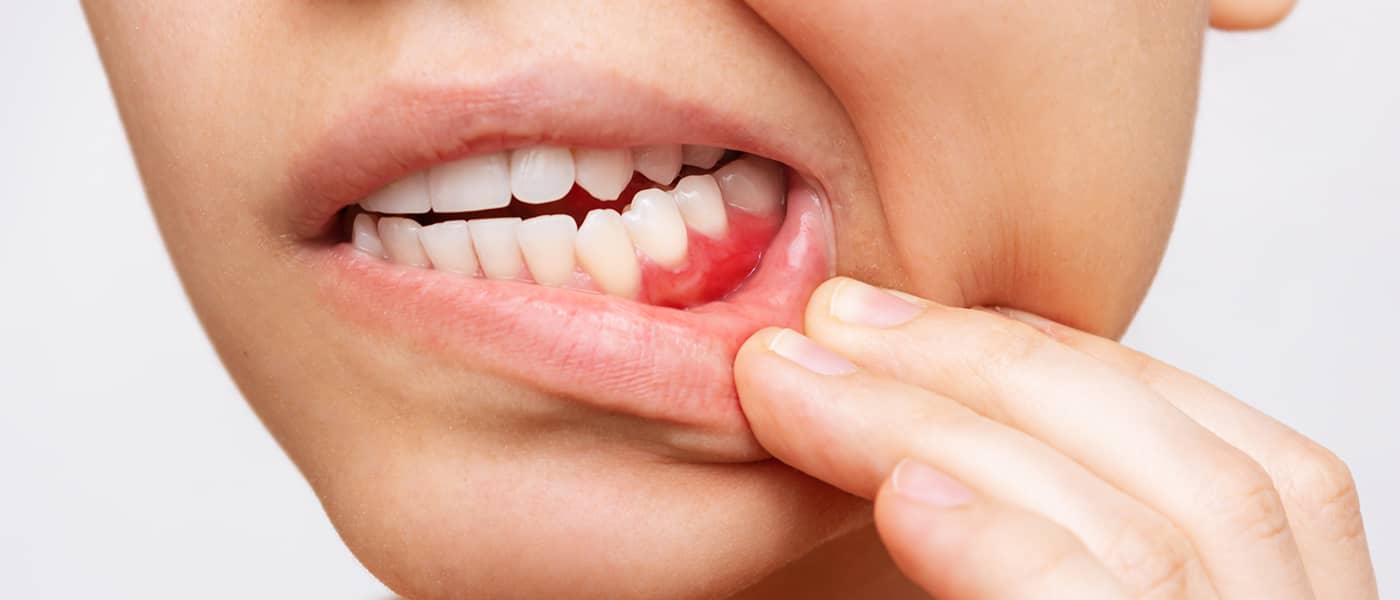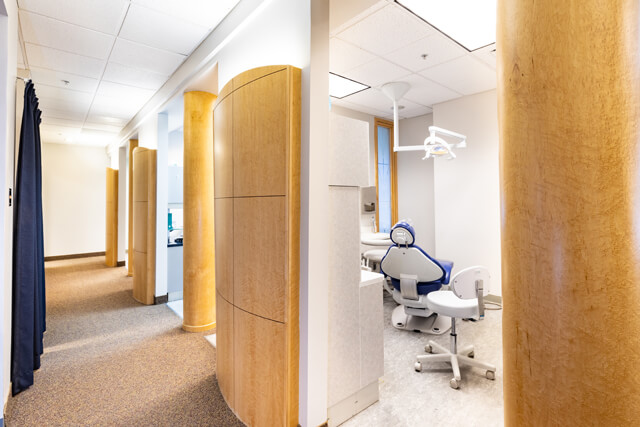Gum Disease Treatment

FOCUS: Learn about gum disease—its causes, symptoms, and the importance of early detection and treatment.
Gum disease, also known as periodontal disease, is a common but serious oral health condition that affects millions of individuals worldwide.
Without proper management, it can cause infections and damage to the gum tissue and the underlying bone.
If left untreated, it can lead to tooth loss and systemic issues like heart disease.
Key Takeaway
Gum disease is an infection of the tissues that support and surround your teeth. If left untreated, it can lead to tooth loss and systemic issues like heart disease.
What is Gum Disease?
Gum disease is an infection of the tissues that support and surround your teeth.
The two main types of gum disease are gingivitis and periodontitis.
Gingivitis is the earliest and mildest form of gum disease, where the gums become inflamed due to plaque buildup. Without proper oral hygiene or regular dental cleanings, this sticky film of bacteria can harden into tartar, causing further irritation.
If gingivitis is not treated, it can progress to periodontitis, a more severe infection affecting the soft tissue and bone, leading to periodontal pockets and tooth loss.
Did You Know?
Gum disease can affect your overall health! Links have been found between periodontal disease and conditions like heart disease, diabetes, respiratory issues, and complications during pregnancy. Maintaining good oral hygiene and treating gum disease are essential for protecting your overall well-being!
Causes of Gum Disease
Gum disease can occur from various factors that lead to infection and inflammation in the gums, including:
- Plaque buildup: A sticky film of bacteria that forms on the teeth, leading to infection if not removed with regular brushing and flossing.
- Poor oral hygiene: Neglecting daily brushing and flossing and skipping regular dental checkups can lead to an accumulation of plaque where bacteria can thrive.
- Smoking: Tobacco use is a major risk factor for periodontal disease because it reduces the body’s ability to fight off infection.
- Medical conditions: Health issues like heart disease, diabetes, and other systemic diseases can increase susceptibility to gum disease.
- Genetics: A family history of gum disease can increase your risk.
- Diet: A diet high in starchy foods and low in nutrients can contribute to plaque buildup and poor gum health.
- Crooked teeth: Misaligned teeth can make cleaning more difficult, leading to increased plaque and bacteria buildup.
Stages of Gum Disease
Gum disease progresses through different stages, each with its own symptoms and implications for oral health.
Early detection and treatment will prevent the advancement of gum disease and reduce the risk of tooth loss. The four stages of gum disease are:
1. Gingivitis
Gingivitis is the mildest form of gum disease, characterized by red, swollen gums that may bleed during brushing.
It is primarily caused by plaque buildup due to inadequate oral hygiene.
The good news is that gingivitis is reversible with proper dental care, including daily brushing, flossing, and professional cleanings.
The early signs of gingivitis are:
- Red or swollen gums
- Bleeding gums during brushing or flossing
- Bad breath
- Sensitivity in the gums
- Mild discomfort when brushing
2. Early Periodontitis
As gingivitis progresses, it can lead to early periodontitis.
At this stage, inflammation spreads deeper into the gums, causing mild bone loss and the formation of periodontal pockets.
Symptoms of early periodontitis include:
- Increased gum redness and swelling
- Persistent bad breath
- Gums that bleed more easily
- Sensitive teeth
- A bad taste in the mouth
- Slight gum recession
3. Moderate Periodontitis
Symptoms become more severe at this stage, with noticeable bone loss and deep pockets forming around the teeth.
Treatment becomes necessary to manage the condition and prevent further complications.
The symptoms of moderate periodontitis include:
- Significant gum swelling and inflammation
- Noticeable gum recession
- Increased sensitivity and pain in the gums
- Loose teeth or changes in bite alignment
- Pus between teeth and gums
- Persistent bad breath
4. Advanced Periodontitis
In this final stage, there is extensive destruction of gum tissue, jaw bone, and supporting structures.
This stage poses a high risk for tooth loss and requires specialized care.
Symptoms of advanced periodontitis include:
- Severe gum swelling and bleeding
- Deep pockets between teeth and gums
- Noticeable tooth mobility or loss
- Pain while chewing
- Changes in bite alignment
- Advanced gum recession
- Persistent bad breath
Signs of Healthy vs. Unhealthy Gums
| Feature | Healthy Gums | Unhealthy Gums |
|---|---|---|
| Color | Light pink | Dark red or purple |
| Texture | Firm and resilient | Soft and swollen |
| Bleeding | No bleeding during brushing or flossing | Bleeds easily during brushing or flossing |
| Sensitivity | No sensitivity | Sensitive or painful when touched |
| Recession | No gum recession | Noticeable gum recession (exposed tooth roots) |
| Bad Breath | Fresh breath | Persistent bad breath (halitosis) |
| Pockets | No pockets around teeth | Presence of periodontal pockets |
| Overall Health | Indicates good oral hygiene and health | Signs of gum disease, risk of systemic health issues |
Gum Disease Prevention
Gum disease is a preventable condition.
Here are key strategies to keep your gums healthy:
- Maintain daily oral hygiene: Brush at least twice daily with hydroxyapatite or fluoride toothpaste, paying special attention to the gum line. Floss daily to clean between teeth and beneath the gums. Use an antimicrobial mouthwash if your dentist recommends one.
- Maintain a healthy diet: Eat a balanced diet rich in fruits, vegetables, whole grains, lean proteins, and dairy products. Stay hydrated with plenty of water, and limit sugary and starchy foods that promote plaque formation.
- Regular dental checkups: Visit your dentist every six months for routine checkups and professional cleanings. This helps monitor your gum health and remove tartar buildup.
- Address risk factors: Quit smoking, as it significantly increases the risk of gum disease. Manage any underlying medical conditions, such as diabetes, with your healthcare provider to lower your risk.
Treatment Options at Highlands Ranch Periodontics & Implant Center
We offer a range of periodontal disease treatment options to address gum disease and restore your oral health.
Each patient’s situation is unique, and our experienced team will evaluate your specific condition and health history.
We create customized treatment plans that may combine various non-surgical and surgical options to achieve the best possible outcomes for your oral health.
Non-Surgical Treatments
- Scaling and root planing: A deep cleaning procedure that removes plaque and tartar from beneath the gum line. It smooths the tooth roots and reduces inflammation, often serving as the initial treatment for gum disease.
- Laser gum therapy: This minimally invasive treatment uses advanced laser technology to target infected gum tissue and encourage healing. Laser therapy offers reduced discomfort and quicker recovery times compared to traditional methods.
Surgical Treatments
- Gum grafting: This procedure involves taking tissue from another area of your mouth to restore receding gums. Gum grafting improves the appearance of your smile and protects tooth roots from damage.
- Gingival flap surgery: In cases of advanced gum disease, flap surgery may be performed to access and clean the roots of teeth. The gum tissue is then repositioned to reduce pocket depth and promote healing.
- Dental bone grafts: If bone loss has occurred due to gum disease, bone grafting can help regenerate lost bone.
Trust the Experts at Highlands Ranch Periodontics & Implant Center
We specialize in diagnosing, treating, and preventing gum disease.
Our highly trained periodontists bring extensive expertise and specialized knowledge to every patient interaction.
Dr. Norouzinia, DDS, is a Board Certified Diplomate of the American Board of Periodontology. He focuses on the effects of biomaterials on healing and pain management after tooth extraction. He stays up-to-date with the latest research and clinical practices.
Dr. Font, DDS, is recognized for her exceptional skills and dedication. She is a Diplomate of The American Academy of Periodontology. Her award-winning background reflects her commitment to providing the highest quality of care in periodontal treatments.
Check out our patient testimonials to see why patients trust us with their periodontal care.
Schedule a Consultation
Schedule a consultation with Highlands Ranch Periodontics & Implant Center today for a thorough evaluation and a personalized treatment plan.
To book an appointment at our periodontal clinic in Highlands Ranch, call (303) 683-1144 or complete the online booking form.
We are committed to helping you achieve optimal oral health and look forward to supporting you on your journey to a healthier smile.
Learn More
Check out our blog to learn more about gum disease prevention and treatment.
- Gum Disease Self-Care: Prevention Starts With YOU
- Can You Reverse Periodontal Disease Naturally?
- Can Receding Gums Be Reversed?
- How Long Does Gingivitis Last?
- Young Gums, Old Problems: Gum Disease Is Ageless
- How Do I Know If I Have Gum Disease?
- How Long Can You Keep Your Teeth With Periodontal Disease?
- 7 Common Myths About Gum Disease You Need to Stop Believing
FAQs
While genetics can play a role in gum disease, it’s not the only factor. Other risk factors, such as poor oral hygiene and smoking, also contribute to the development of gum disease.
Early detection and treatment of gum disease can help save your teeth. It’s important to schedule regular dental check-ups and promptly address gum disease signs to prevent further damage.
No, gum disease is a common condition that can be effectively treated and managed. You can improve your gum health and maintain a healthy smile with proper care and treatment. Our team at Highlands Ranch Periodontics & Implant Center is dedicated to helping you achieve optimal oral health and supporting your journey to a healthier smile.


